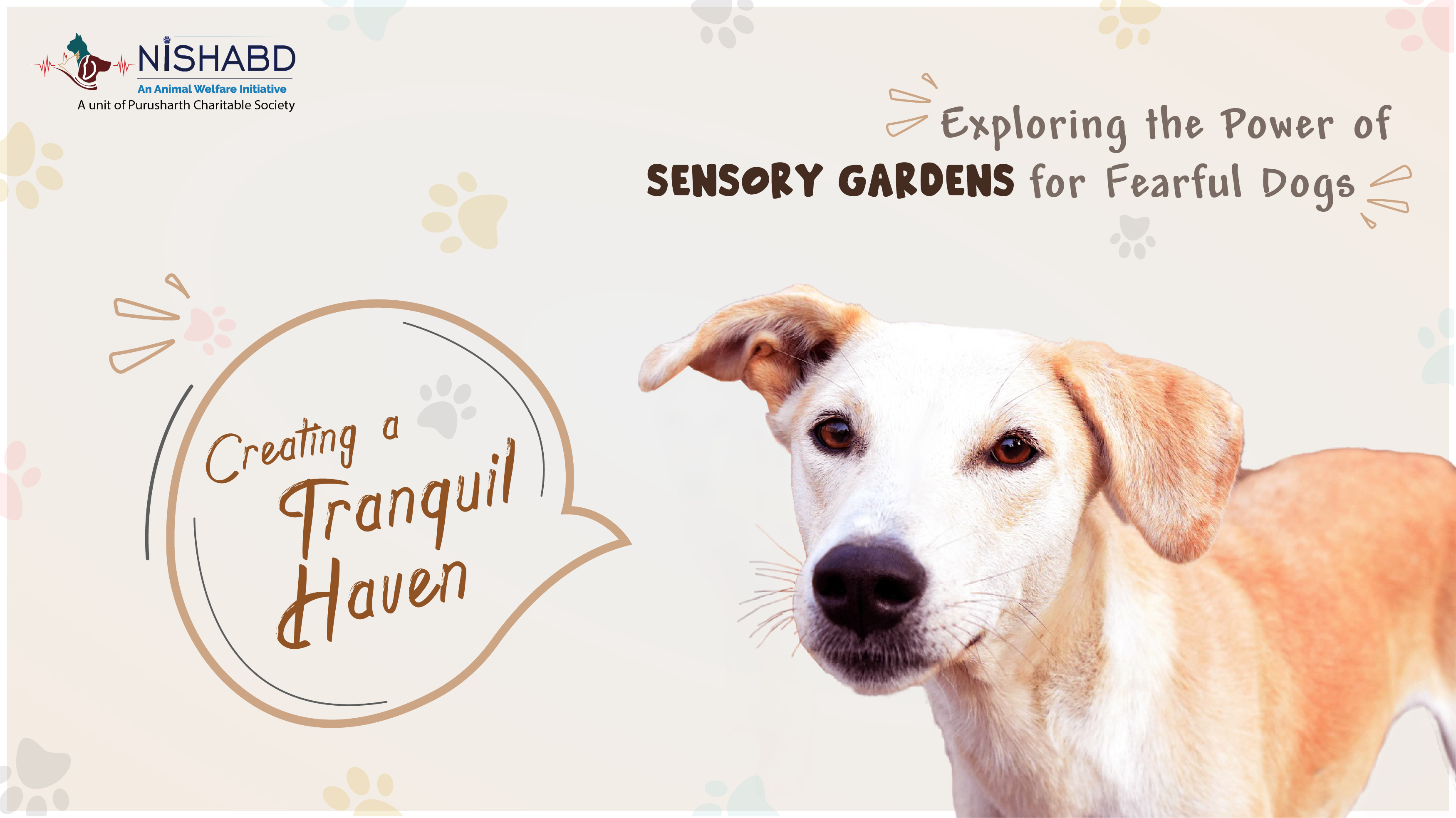Creating a Tranquil Haven: Exploring the Power of Sensory Gardens for Fearful Dogs

For many dogs, the world can be an overwhelming place filled with various stimuli that trigger fear and anxiety. However, there is a remarkable solution that can help our beloved furry friends find solace and comfort – the sensory gardens.
Understanding Sensory Gardens:
A sensory garden is a thoughtfully designed outdoor space that stimulates the senses through the use of different elements such as plants, textures, scents, sounds, and visual features. It is specifically designed to engage and calm the sensory system of dogs, offering a sanctuary where they can feel safe and secure.
The Benefits of Sensory Gardens for Fearful Dogs:
- Sensory Stimulation: Sensory gardens offer a wealth of sensory experiences for dogs, allowing them to explore and engage with their environment at their own pace. The various elements within the garden, such as different textures to walk on, aromatic plants to sniff, and gentle sounds of nature, provide positive sensory stimulation that can help alleviate anxiety and promote relaxation.
- Calming Effects: The carefully selected plants and features in a sensory garden can have a soothing effect on dogs. For instance, lavender and chamomile are known for their calming properties, while gentle water features create a tranquil ambiance. These calming elements help dogs feel more at ease and reduce their fear response.
- Desensitization: Sensory gardens can serve as a gentle exposure therapy tool for fearful dogs. By gradually introducing them to different stimuli in a controlled and positive environment, dogs can become more accustomed to various sensory experiences, which can help desensitize them over time.
How to make a Sensory Garden for Dogs:
- Plant Selection: Choose a variety of plants that appeal to a dog’s senses. Incorporate plants with different textures, heights, and scents. Some examples include soft grasses, aromatic herbs, and plants with interesting foliage.
- Sound Elements: Introduce gentle sounds to the garden, such as wind chimes or a small water feature. These sounds can create a calming atmosphere and help drown out any loud or unsettling noises from the surroundings.
- Textures and Surfaces: Provide a range of surfaces for dogs to walk on, such as soft grass, gravel, or wooden decking. This variety allows dogs to experience different sensations under their paws and promotes sensory exploration.
- Safe Enclosures: Ensure the garden is securely enclosed to prevent dogs from wandering off and to create a sense of safety and containment. A fenced area also allows dogs to freely explore without the worry of outside threats.
A sensory garden can be a transformative space for fearful dogs, offering them a sanctuary where they can find peace, relaxation, and gradual desensitization to their fears.
The basics of how to make a sensory garden for dogs is by incorporating a thoughtful selection of plants, textures, scents, and sounds. The purpose remains to create an environment that nurtures dogs’ senses and supports their emotional well-being[1]. So, let’s embrace the concept of sensory gardens and provide our beloved canine companions with a haven where they can bloom and thrive.
Implementing Sensory Activities in a Dog’s Daily Routine:
- Scent Work: Dogs have an incredible sense of smell, so engaging them in scent work activities can be both mentally stimulating and enriching. Hide treats or toys around the garden or use scent puzzles to encourage them to use their noses and follow different scents.
- Tactile Experiences: Provide various textures and surfaces for dogs to explore, both indoors and outdoors. This can include different types of flooring, textured toys, or even a designated digging area with safe materials. Allowing them to engage with different textures helps satisfy their natural instincts and provides a sensory outlet.
- Sound Therapy: In addition to the natural sounds in the sensory garden, you can also incorporate sound therapy sessions into your dog’s routine. Play calming music or use specialized soundtracks designed to reduce anxiety in dogs. This can be particularly helpful during stressful situations such as thunderstorms or fireworks.
- Mindful Engagement: Practice mindful engagement with your dog by offering focused attention and positive reinforcement. Take the time to observe their body language and responses to different stimuli. By being present and responsive to their needs, you can create a stronger bond and build trust, which is especially important for fearful dogs.
- Training and Positive Reinforcement: Implement positive reinforcement training techniques to help build your dog’s confidence. Reward desired behaviors and gradually expose them to new experiences in a controlled and positive manner. This approach helps them associate positive outcomes with new stimuli, reducing fear and anxiety over time.
At Nishabd Shelter, we recognize the significant impact sensory enrichment can have on the lives of fearful dogs.
Remember, each dog is unique and their needs and preferences may vary, so it’s essential to observe their reactions and tailor the sensory garden to their specific needs. Pay attention to their comfort levels and always prioritize their safety and well-being.
With patience, understanding, and a well-designed sensory garden, we can help our fearful dogs overcome their anxieties and lead happier, more confident lives!
Read our Article: Embrace a Heartwarming Journey: Choosing Love through Animal Adoption
